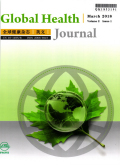- 钛学术文献服务平台 \
- 学术期刊 \
- 医药卫生期刊 \
- 预防医学与卫生学期刊 \
- 全球健康杂志(英文)期刊 \
Levels of economic developement and the spread of coronavirus disease 2019 (COVID-19) in 50 U.S.states and territories and 28 European countries: an association analysis of aggregated data
Levels of economic developement and the spread of coronavirus disease 2019 (COVID-19) in 50 U.S.states and territories and 28 European countries: an association analysis of aggregated data
基本信息来源于合作网站,原文需代理用户跳转至来源网站获取
摘要:
Background: The coronavirus disease 2019 (COVID-19) became a global pandemic within several months after it was first reported at the end of December,2019.Countries in the Northern Hemisphere have been affected the most,including the United States and European countries.Contrary to the common knowledge that infectious diseases are more prevalent in low-and middle-income countries,COVID-19 appears to affect wealthy countries more.This paper attempts to quantify the relationship between COVID-19 infections and levels of economic development with data from the U.S.and Europe.Methods: Public domain data on the confirmed COVID-19 cases during January 1 and May 31,2020 by states and territories in the U.S.and by countries in Europe were included.Incidence rate was estimated using the 2019 total population.COVID-19 cases were associated with 2019 gross domestic product (GDP) using regression models after a logarithmic transformation of the data.The U.S.data and European data were analyzed separately,considering significant heterogeneity between the two.Results: A total of 2 451 691 COVID-19 cases during a 5-month period were analyzed,including 1 787 414 from 50 U.S.states and territories and 664 277 from 28 European countries.The overall incidence rate was 5.393/1000 for the U.S.and 1.411/1 000 for European countries with large variations.Lg (total cases) was significantly associated with lg (GDP) for U.S.states (=1.2579,P < 0.001) and European countries (=0.7156,P < 0.001),respectively.Conclusion: This study demonstrated a positive correlation between COVID-19 case incidence and GDP in the United States and 28 European countries.Study findings suggest a potential role of high-level development in facilitating infectious disease spread,such as more advanced transportation system,large metropolitan cities with high population density,better domestic and international travel for businesses,leisure,and more group activities.These factors must be considered in controlling the COVID-19 epidemic.This study focuses on the impact of economic development,many other factors might also have contributed to the rapid spread of COVID-19 in these countries and states,such as differences in national and statewide anti-epidemic strategies,people's behavior,and healthcare systems.Besides,low-and middle-income countries may have an artificially low COVID-19 case count just due to lack of diagnostic capabilities.Findings of this study also encourage future research with individual-level data to detect risk factors at the personal level to understand the risk of COVID-19.

推荐文章
COVID-19临床资料分析
新型冠状病毒
感染
新型冠状病毒性肺炎
喹啉类生物碱在治疗COVID-19中的应用与问题
COVID-19
喹啉类生物碱
氯喹
羟氯喹
临床安全性
COVID-19疫情下方舱CT的紧急建设
新型冠状病毒肺炎
方舱CT
辐射防护
CT质量控制
内容分析
关键词云
关键词热度
相关文献总数
(/次)
(/年)
文献信息
| 篇名 | Levels of economic developement and the spread of coronavirus disease 2019 (COVID-19) in 50 U.S.states and territories and 28 European countries: an association analysis of aggregated data | ||
| 来源期刊 | 全球健康杂志(英文) | 学科 | |
| 关键词 | |||
| 年,卷(期) | 2021,(1) | 所属期刊栏目 | UNDERSTANDING INFLUENTIAL FACTORS AT THE NATIONAL LEVEL |
| 研究方向 | 页码范围 | 24-30 | |
| 页数 | 7页 | 分类号 | |
| 字数 | 语种 | 英文 | |
| DOI | |||
五维指标
引文网络
引文网络
二级参考文献 (0)
共引文献 (0)
参考文献 (2)
节点文献
引证文献 (0)
同被引文献 (0)
二级引证文献 (0)
2013(1)
- 参考文献(1)
- 二级参考文献(0)
2020(1)
- 参考文献(1)
- 二级参考文献(0)
2021(0)
- 参考文献(0)
- 二级参考文献(0)
- 引证文献(0)
- 二级引证文献(0)
引文网络交叉学科
相关学者/机构
期刊影响力
全球健康杂志(英文)
主办单位:
人民卫生出版社有限公司
出版周期:
季刊
ISSN:
2096-3947
CN:
10-1495/R
开本:
出版地:
北京市朝阳区潘家园南里19号
邮发代号:
创刊时间:
语种:
eng
出版文献量(篇)
111
总下载数(次)
0
总被引数(次)
25
期刊文献
相关文献
推荐文献

 免费查重
免费查重










